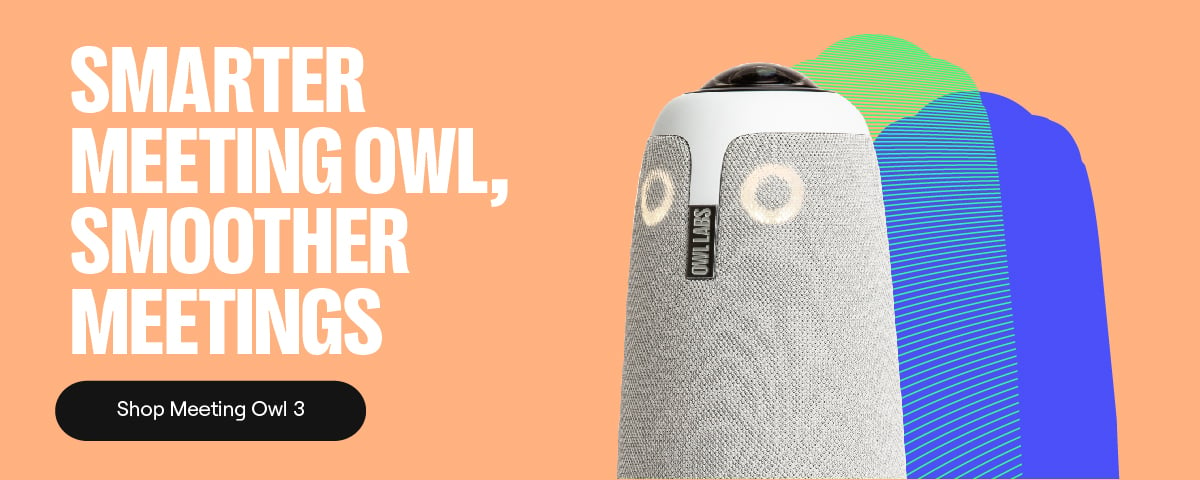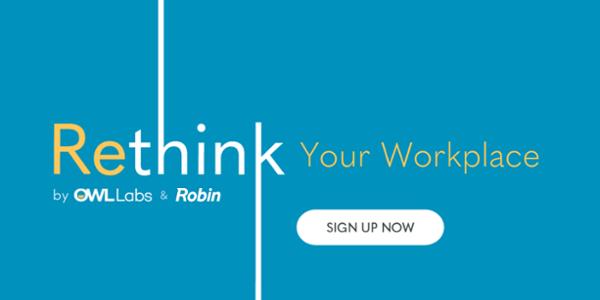What types of technology do you use on a daily basis? If you're anything like me or one of the five billion people with a mobile device, you're likely using a smart piece of technology. When you make a phone call, send a text, or start a video chat, you're using smart technology that connects you with people you care about, no matter if they're sitting right next to you or across the world.
Smart devices are connected to the Internet and use analytics to understand how you use your smartphone to adapt and enhance your experience. Each new software update is carefully thought out to ensure the phone is as helpful and user-friendly as possible.
Consumer technology is constantly changing and advancing, and your office should be no different. New innovations in meeting technology and video conferencing tools allow offices to connect employees and teams no matter where they're located.
The newest innovation is the smart office that uses technology to help organizations work productively and collaborate effectively. Smart offices use connected technology and analytics to ensure the workplace is equipped for the specific needs of employees at any given time. This allows workspaces to adapt and evolve as organizations change and grow.
Curious about what makes a smart office, smart? Let's dive in!
What Is a Smart Office?
A smart office uses technology to help employees work more productively and efficiently, whether employees are working in the office or working remotely and connecting with their in-office team. Smart offices use connected technology and analytics to understand how the workplace can best serve employees so they can work productively.
Smart office technology often includes video conferencing software and hardware tools, meeting room and desk booking software, and office analytics tools to provide insight into how different office spaces are being used. This technology smart office technology adapts to the communication styles of the evolving workplace and provides data, resources, and tools to make the future of work as productive as possible.
So, what are the benefits of a smart office? Smart office technology and meeting spaces make it quick and easy to schedule and hold hybrid meetings and helps teams run more productive meetings no matter where meeting attendees are located.
In a smart office, people can find the best workspace for their needs, whether they're collaborating with a group or working on individual tasks. Plus, smart office technology helps IT and facilities leaders analyze how tools and spaces are used so improvements can be made and workspaces can be used most efficiently, now and in the future. This comes in handy when planning office moves or renovations so the workspaces fit the needs of employees.
Components of a Smart Office
The primary components of a smart office are smart meeting rooms and smart workspaces. These are the areas where employees work most often and can benefit from the use of smart technology to improve their work experience.
Smart Meeting Rooms
Smart meeting rooms are powered by intelligent technology that integrates hardware and software tools into the meeting space to create a highly productive meeting experience for remote and in-person attendees.
The meeting spaces are equipped with tools and technology that make meetings easy to set up, schedule, and manage. They're often integrated with tools like video conferencing software and hardware, whiteboard tools, and analytics and productivity tools.
Smart Workspaces
Smart workspaces are areas where employees can work, either individually or in small groups, outside of a formal meeting setting. They are different areas of an office that allow employees to choose which environments make the most sense for whichever tasks or projects they're working on.
- Activity-based work: A work environment wherein employees rotate throughout different spaces throughout the day, depending on their needs.
- Hot-desking or floating desks: An office organization system wherein multiple employees use different workstations throughout the day, using a floating or reservation system.
- Co-working spaces: Spaces where employees can work together in areas that aren't meeting rooms or individual workstations.
Smart Office Tools
By integrating the latest tools and technology into your workspace, you're well on your way to making your office smart. Here are the tools to include in your smart office setup.
Visual Collaboration Software
Visual collaboration software is an umbrella term for tools like video conferencing software and workspace collaboration software. Both types of software help employees connect with teammates and clients no matter where they're located. Video conferencing software like Zoom, Google Meet, and Skype for Business helps people connect no matter where they're located. Plus, there are free video conferencing software options you can use to get started.
Workplace collaboration software, like RemoteHQ, Mural, and Miro, allow teams to brainstorm by providing applications for project management, multi-person screensharing, note-taking, and virtual whiteboarding. Many collaboration software options integrate with other productivity tools like Trello, Google Docs, Dropbox, Slack, and more. This allows in-person and distributed teams can work together efficiently and effectively.
Visual Collaboration Hardware
These days, most conference rooms and huddle rooms are outfitted with video conferencing hardware. Video conference cameras help connect people, regardless of where they're located. With HD video streaming and clear, noise-reducing audio, the best video conferencing hardware can transform your business operations by bringing an in-person experience to virtual meetings.
Popular video conference cameras include the Meeting Owl, Logitech Meetup, and the HuddleCamHD. Smart offices are best equipped to adapt to the future of work by using smart video conference cameras, like the Meeting Owl Pro. The Meeting Owl Pro improves on the Meeting Owl's core 360° meeting experience and includes Smart Meeting Room capabilities.
Your meeting space will become increasingly intelligent over time with new smart integrations and functionality. The first Smart Meeting Room capability is Smart Zooming, which identifies, locates, and magnifies the person speaking to create a fully immersive experience for those who can’t attend the meeting on-site. In the future, your Smart Meeting Room will be equipped with IT analytics, fleet management, and productivity apps to ensure meetings are as effective as possible.
Meeting Room Analytics and Space Management Tools
Smart offices are integrated with analytics tools that help IT leaders and facilities management see how meeting spaces are being used so they can provide the best employee experience. Meeting room analytics tools help them understand which spaces are used most and least frequently or which rooms are booked but left empty.
These tools often provide information about which meeting rooms are used for different types of meetings which gives leaders insight into the spaces people prefer to hold different meetings in, so they can plan any adjustments to the office layout if need be.
Smart office design helps you adapt your workspaces to meet the needs of your employees and create a productive work environment. Ready to build your own smart office? Get a recommended meeting room set up to help design your meeting rooms and download the smart office guide for even more tips and tricks and smart office tool recommendations.
![[Webinar] How to Rethink Your Workplace to Prepare for the Return to Work →](https://no-cache.hubspot.com/cta/default/2799205/0f9e8e9e-81a0-43c5-9c40-3a970446df03.png)


